How To Care For Coprosmas
The most important part starts with planting and our article, How To Plant A Coprosma, provides sound advice on how to do this properly. So, let’s now assume your plant is growing well and you want to keep it that way!
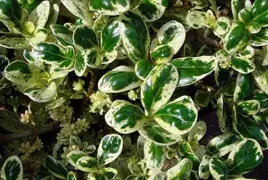
Coprosma is a versatile and hardy plant native to New Zealand, known for its glossy foliage and year-round interest. This guide covers how to grow, care for, and propagate Coprosma, along with recommended varieties for landscaping, hedging, and ground cover.
Coprosma care is about making sure the plants are thriving. Our plant care article provides the necessary details to give you the greatest chance of success. Afterall, there is nothing worse than putting the effort into planting for them to fail. Therefore, follow our advice for Coprosma care and give yourself the best chance of success.
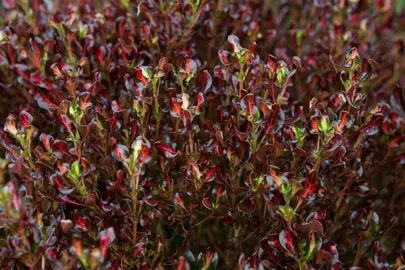
The most important part starts with planting and our article, How To Plant A Coprosma, provides sound advice on how to do this properly. So, let’s now assume your plant is growing well and you want to keep it that way!
Winter is the perfect time for mulching and trimming your plants. Trimming can be aggressive or subtle as you like. Typically, plants are trimmed to contain growth and encourage fresh, new foliage. Coprosmas will sprout away again no matter how hard they are cut back and provided the stem is healthy.
Organic matter such as compost or sheep pellets should be spread liberally around the plants and then overlaid with a mulch during winter. The Plant Company has three very good options for mulch. The first is coco fibre matting which is made from the husks of coconuts. The second is Earth Mat which is made from recycled paper. Both of these break down to become part of the soil within two years. The third is black plastic matting which will last 20 years or more. Whichever mulch is used, The Plant Company recommend stones, bark chip, or other similar products be spread over top for aesthetic purposes. The Plant Company does not recommend adding fertiliser during winter as this is better applied in spring so less is wasted. However, adding organic matter such as compost is quite okay.
Spring is the perfect time for fertilising the plants as they start to bounce into life. The Plant Company has fertilisers which have been specially blended for different plants and in this instance, our native plant fertiliser will give them the correct boost and keep them fed for 12-months. A suitable alternative is our organic fertiliser which will also keep them well fed but they will require a secondary application in autumn.
Summer is when the plants need regular watering and this should be undertaken every second day on the hottest days. Plants that are establishing need particular attention as their root system will not have penetrated deep enough to secure consistent moisture yet.
Caring for Coprosmas in autumn is about keeping the plants healthy. Foliar feeding using a liquid fertiliser can be undertaken during spring, summer, and autumn if you have time but this is not essential if solid fertiliser and/or good amounts of organic matter have already been applied. If you think the plants need an extra boost or have some yellowing, however, a liquid fertiliser won’t hurt.
There is a wealth of information about Coprosma and The Plant Company is often asked specific questions which we have laid out in this section.

Coprosma are endemic to New Zealand. There are over 90 species of Coprosma worldwide, and 58 of them are found in New Zealand. Coprosma shrubs and small trees are found throughout New Zealand, in forests, along coastlines, and in alpine grasslands. They are known for their attractive foliage and fruit, which can be red, orange, yellow, or black.
Some of the most common coprosma species in New Zealand include:
Coprosma plants are an important part of the New Zealand ecosystem, and they provide food and habitat for a variety of native birds and insects. They are also popular in landscaping, and they can be used to create hedges, screens, and windbreaks.
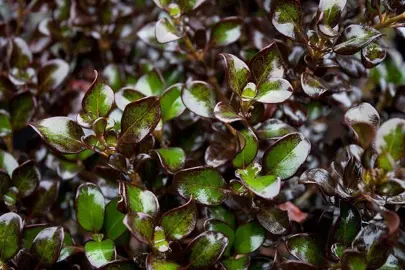
Coprosmas are predominantly evergreen plants. This makes them a popular choice for gardens and hedging. While there are over 90 species of Coprosma, and most of them are evergreen, there are a few deciduous species. Coprosma rugosa is one of the more common deciduous species.

Absolutely! Like all living things, Coprosmas need water to survive. However, their water needs vary depending on several factors, including:
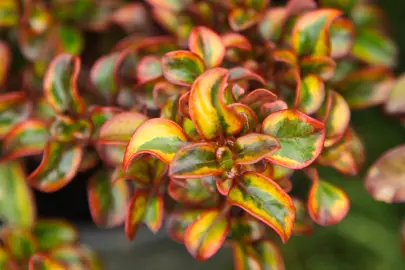
Coprosma generally grows quickly with most growing 30-50 cm per year, and some even faster. For example, Coprosma robusta, commonly known as karamu, will reach 5 m tall in just a few years. The growth rates vary depending on the variety, climate, soil conditions, watering, and how well they are fed. For example, Coprosmas will grow faster in warm, sunny climates with well-drained soil and regular watering and feeding.

Most coprosma species prefer full sun, but they can also tolerate partial shade. However, some varieties such as Coprosma 'Poor Knights' and Coprosma 'Golden Glow' have brighter foliage if they are grown in full sun.

The hardiness of Coprosma varies greatly depending on the specific species and variety, making it difficult to give a single answer. However, here's a general overview to help you understand the range:
Most Hardy:
Moderately Hardy:
Least Hardy:

The height of Coprosma plants varies depending on the species. Some are low-growing shrubs that only reach 1-2 m tall, while others can grow into small trees up to 10 m tall.
Here are some examples of coprosma species and their heights:

Coprosma is considered toxic to dogs. All parts of the Coprosma plant, including the leaves, stems, and berries, can be harmful if ingested and result in:

Coprosmas come in a wide array of different leaf colors, making them popular choices for adding visual interest to gardens. Here are some common varieties for different leaf colours:
Black foliage
Brown foliage
Green foliage
Orange foliage
Pink Foliage
Purple Foliage
Red Foliage
Yellow Foliage
Variegated Foliage
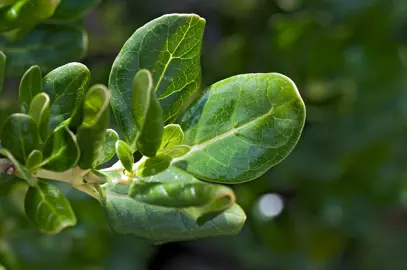
Taupata is the common name for Coprosma repens and is a hardy shrub or small tree native to New Zealand. It is known for its glossy, green foliage that have an almost plastic feel. Here are some key features of Taupata include:
The plant has a unique adaptation – tiny mites live inside pouches on the leaves. This symbiotic relationship benefits both the plant and the mites!
If you're looking for a tough and visually appealing plant for your garden, especially a coastal one, then Taupata might be a great choice.
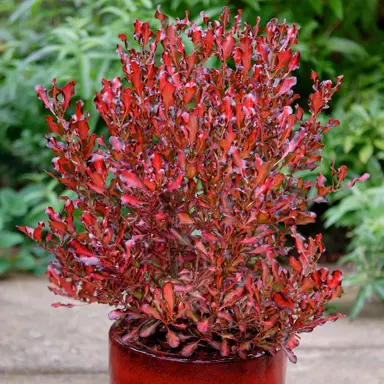
The most common red leaf plant in NZ is one of the Coprosma varieties. Several of these have beautiful red leaves, and they are provided below:

Coprosma is a genus of flowering plants native to New Zealand, the Hawaiian Islands, Borneo, Java, New Guinea, islands of the Pacific Ocean to Australia, and the Juan Fernández Islands. About half of the 90 species of Coprosma are found in New Zealand.
Propagating Coprosmas is a relatively straightforward process when you have the right advice. They are easily rooted, and our articles give you the best chance of doing this successfully and efficiently.
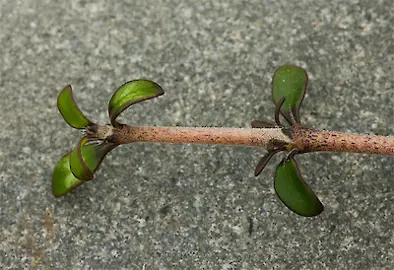
Coprosmas are easily propagated from stem cuttings. Semi-hardwood cuttings are usually taken from autumn until mid-spring. A stem about 8-10 cm long is trimmed into a cutting using secateurs with 2-3 leaves at the top and just below a node. A nick is taken off the base of the cutting to expose more tissue. The cutting is dipped in rooting hormone for 5-10 seconds and then inserted into propagation growing media. The tray of cuttings is placed under mist with bottom heat also applied. The cuttings will have taken root inside of three weeks as a rule.
Choosing a Coprosma that works for you can be challenging given the sheer number that are available. Working through the different varieties, how big they grow, the foliage colour, and so on, can take considerable time. The Plant Company’s series of short articles aims to offer concise and easy to follow advice and recommendations so you can determine the variety for your needs.
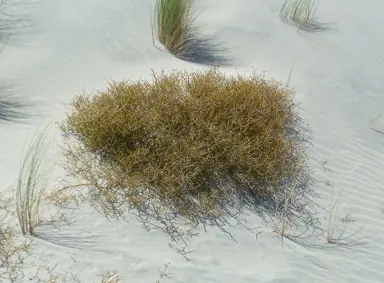
Coprosma acerosa, also known as sand coprosma, is a resilient shrub native to New Zealand. It is a low-growing, sprawling shrub that forms a dense, tangled mat. It typically reaches around 75 cm tall and 1.5 metres wide. Some of its key characteristics include:
Coprosma acerosa is a versatile and hardy shrub that brings texture and colour to coastal gardens. Its ability to thrive in challenging conditions makes it a valuable addition to landscaping projects.

Coprosma areolata, commonly known as the thin-leaved coprosma, is a bushy, NZ native shrub. It grows to about 3 m tall with a leafy appearance. The leaves are held densely on slender branches. Some further characteristics include:

Coprosma ‘Black Cloud’ is a low-growing, evergreen shrub known for its dark foliage:
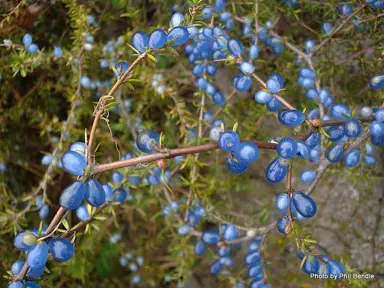
Coprosma brunnea, also known as the brown coprosma, is a hardy and adaptable, NZ native shrub. It grows with a prostrate habit and forms a dense mat up to 2 metres wide. Some of its key characteristics include:
Overall, Coprosma brunnea is a versatile and easy-to-care-for shrub that can add beauty and functionality to your garden. Its low-growing habit, tolerance for harsh conditions, and ability to attract wildlife make it a great choice for a variety of landscaping needs, especially in drier and coastal areas.
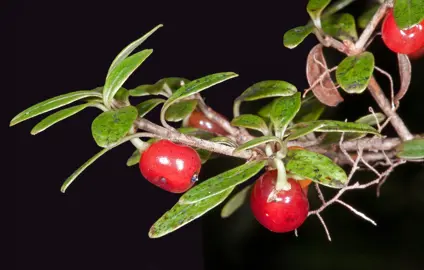
Coprosma colensoi, named after the New Zealand missionary and botanist William Colenso, is a bushy shrub native to New Zealand. It's known for its adaptability and interesting foliage variations. Here are some of its characteristics:
Coprosma colensoi is an interesting shrub with unique foliage variations. While not as widely used in landscaping, it can be a valuable addition to gardens seeking something a little different.
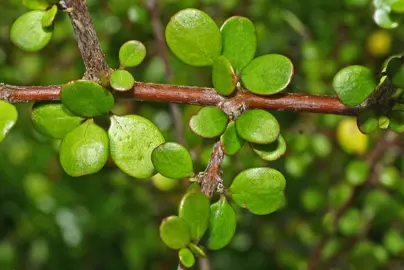
Coprosma crassifolia is a densely branched shrub that is endemic to New Zealand. It's a popular choice for gardeners due to its attractive foliage and tolerance of various conditions:
Overall, Coprosma crassifolia is a versatile and easy-to-care-for shrub that offers attractive foliage, adaptability to various conditions, and ecological benefits.

The list of Coprosmas that The Plant Company has worked on, propagated, marketed and recommended is extensive. Our database of Coprosma varieties is listed below:

Coprosma 'Galaxy' is a NZ native, evergreen shrub grown for its colourful foliage. The small, green leaves are flecked with gold and held on slender, dark stems. Some key information includes:
Overall, Coprosma 'Galaxy' is a versatile and easy-to-care-for shrub that offers year-round beauty and functionality to your garden.
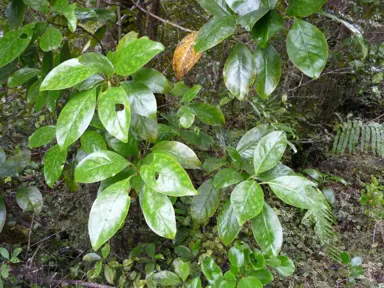
Coprosma grandifolia, also known as Kanono or Raurekau, is a tall shrub, reaching up to 6 metres in height. It has pairs of large, pale green, and mottled leaves, which are the largest of any New Zealand coprosma. The leaves have small pits (domatia) on the underside where the lateral veins join the midrib. These domatia are thought to provide a habitat for predatory mites that help to control insect pests. The flowers are small and inconspicuous, but the fruit is a bright orange or red berry that is attractive to birds. Some further information includes:
If you are looking for a beautiful and easy-to-care-for shrub for a shady garden, Coprosma grandifolia is a great option.

Coprosma 'Hawera', also known as Sand Coprosma, is a compact variety of Coprosma acerosa. It is a low-growing, evergreen shrub with a spreading, prostrate form. It forms a dense mat, typically reaching only 10-15 cm tall and spreading to 2-2.5 metres wide. Some of its key features include:
With its low-maintenance requirements and ability to thrive in challenging environments, Coprosma 'Hawera' is a valuable addition to gardens seeking a touch of coastal charm and a reliable groundcover solution.

Coprosma 'Inferno' is a popular and vibrant, evergreen shrub due to its colourful foliage. Some if its key characteristics include:
Overall, Coprosma 'Inferno' is a versatile and easy-to-care-for shrub that offers a burst of colour throughout the year.
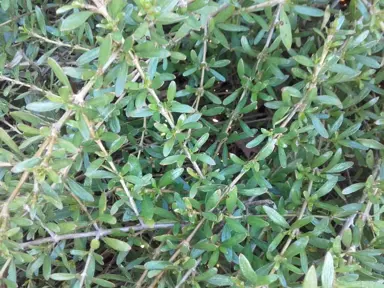
Coprosma kirkii, aka Coprosma x kirkii, is a popular groundcover shrub native to New Zealand. It is a fast-growing and sprawling shrub that forms a dense mat of foliage. It typically reaches 40 cm tall and spreads to 1 metre wide. Some of its key characteristics include:
Overall, Coprosma kirkii is a versatile and hardy groundcover shrub that offers several benefits for gardeners. Its low-maintenance nature, dense growth habit, and tolerance of challenging conditions make it a valuable addition to landscaping projects, particularly in coastal areas or locations with poor soil quality.
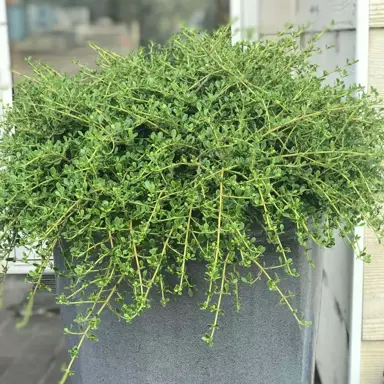
Coprosma 'Lighthouse' is a popular and versatile evergreen with vibrant foliage and low-maintenance requirements. Some of its characteristics includes:
Overall, Coprosma 'Lighthouse' is a versatile and lush plant. Its tolerance for various conditions makes it a popular choice for gardeners of all skill levels.

Coprosma Lobster is a vibrant shrub that produces stunning foliage. This hardy evergreen is a New Zealand native that features glossy, red-orange leaves. The new growth emerges a brighter orange, adding a touch of vibrancy to the plant overall. It typically reaches a maximum height and spread of 1.5 meters. Some further details include:
Coprosma Lobster is a beautiful and easy-to-care-for plant that can add a touch of colour and vibrance to a garden. With its tolerance for a variety of conditions, it's a great choice for gardeners of all levels.
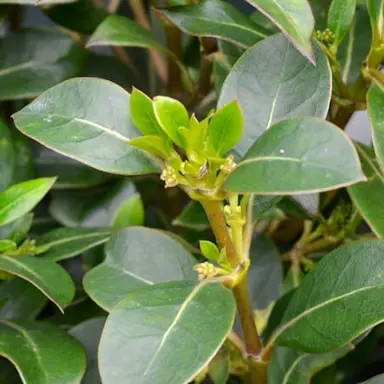
Coprosma lucida, also known as Shining Karamu, is a beautiful shrub or small tree endemic to New Zealand. Some of its key characteristics include:
With its attractive foliage, vibrant berries, and adaptability, Coprosma lucida is a versatile plant that can enhance the beauty and functionality of your garden.
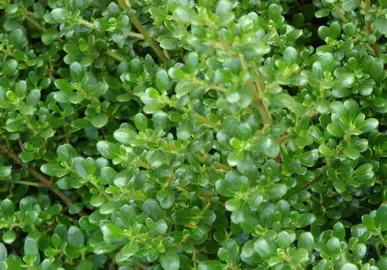
Coprosma 'Middlemore' is a popular New Zealand native shrub. It a compact and versatile plant that is prized for several key characteristics:
Overall, Coprosma 'Middlemore' is a versatile and easy-to-care-for shrub that offers year-round beauty and functionality to your garden. Its compact size, attractive foliage, and tolerance for various conditions make it a great choice for gardeners of all levels.
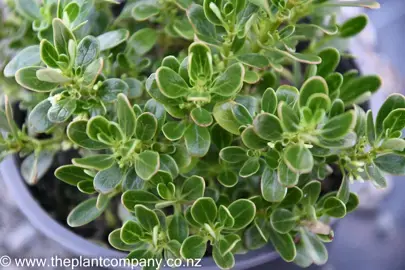
Coprosma 'Mini Mac' is a popular plant due to its compact size and great aesthetics:
Coprosma 'Mini Mac' is a versatile and easy-to-care-for shrub that offers a touch of evergreen beauty to your garden. Its compact size and adaptability make it a great choice for various landscaping applications.
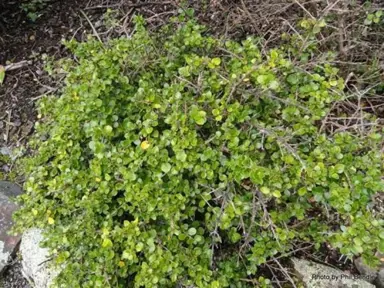
Coprosma neglecta is a NZ native, coastal shrub. It is a low-growing, spreading shrub that reaches 50 cm tall and can spread 2 m wide. Some of its features include:
Overall, Coprosma neglecta is a versatile and easy-to-care-for shrub that thrives in coastal areas. Its vibrant foliage, tolerance for dry conditions, and ability to withstand coastal elements makes it a great choice for a wide variety of landscape options.

Coprosma ‘Poor Knights’ is a prostrate form of Coprosma repens and is endemic to the Poor Knights Islands off the coast of New Zealand. It is a popular groundcover due to its attractive features and ease of care:
The glossy green foliage of Coprosma ‘Poor Knights’ along with its versatility and ease of care makes it a popular choice for landscapers and gardeners alike.
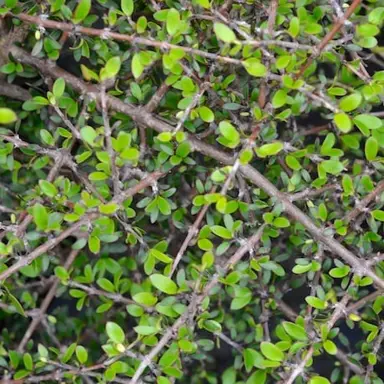
Coprosma propinqua, commonly called Mingimingi is a versatile and tough, evergreen shrub or small tree native to New Zealand. Some of it key features include:
Coprosma propinqua is valuable for ecological restoration projects and makes for good hedging or low shelter in mixed native plantings. It is also great for attracting birds and lizards.

Coprosma prostrata, also commonly known as creeping coprosma, is a popular, low-growing evergreen shrub that is native to New Zealand. Some of its key characteristics include:
Coprosma prostrata is a versatile and easy-to-care-for plant that can add beauty and functionality to your garden. Its low-growing habit, attractive foliage, and tolerance for various conditions make it a great choice for a variety of landscaping needs.
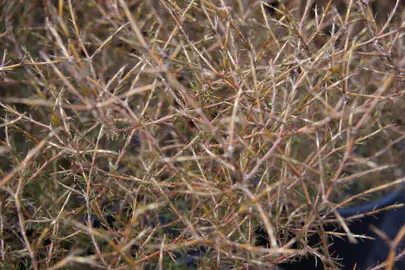
Coprosma 'Red Rocks' is a vibrant, NZ native shrub. It is known for its stunning reddish foliage which comprise tiny, orange-red, needle-like leaves that are borne on prominent, dark red-brown stems. The foliage intensifies to a brighter red colour during colder temperatures. It has a divaricating form, meaning the branches are more prominent than the leaves and those branches are borne at odd angles. Coprosma ‘Red Rocks’ typically reaches 75 cm tall and 1 m wide.
Coprosma 'Red Rocks' is a beautiful and versatile plant that can add a touch of colour and texture to a garden. With its easy-care nature and tolerance for a variety of conditions, it's a great choice for both novice and experienced gardeners alike.

Coprosma repens, also known as mirror bush, is a flowering shrub or small tree native to New Zealand. It is known for its glossy, dark green leaves and small, orange fruits that are attractive to birds. Here are some of its key characteristics:
If you are looking for a low-maintenance, attractive plant for your garden, Coprosma repens is a great option.
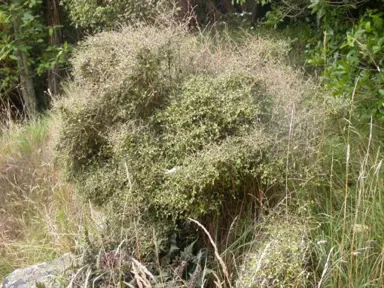
Coprosma rhamnoides, commonly known as Twiggy Coprosma, is a dense shrub native to New Zealand. It is a tightly branched shrub, typically reaching 1 m tall and 1.5 m wide, and has a twiggy appearance. Some of its key characteristics include:
Coprosma rhamnoides is a hardy and adaptable shrub that can thrive in various conditions. While its aesthetics may not be for everyone, its ecological benefits and tolerance of dry areas make it a valuable consideration for specific landscaping needs.

Coprosma rigida is a bushy, large shrub native to New Zealand. It grows as a “twiggy” shrub up to 4 m tall. Some of its key characteristics include:

Coprosma rotundifolia is a shrub native to New Zealand. It is a “twiggy” plant that can reach 2-3 m tall and wide. Some of its key characteristics include:
Overall, Coprosma rotundifolia is a versatile and attractive shrub that can add beauty and ecological value to your garden.
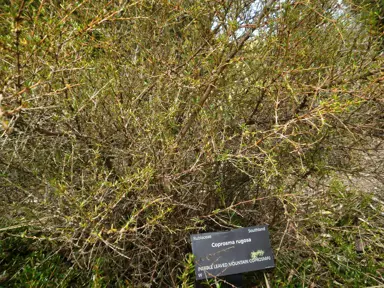
Coprosma rugosa, also known as the needle-leaved mountain coprosma is a tough, NZ native shrub. Some of its key characteristics include:
Overall, Coprosma rugosa is a versatile and hardy shrub that can add beauty and functionality to your garden.
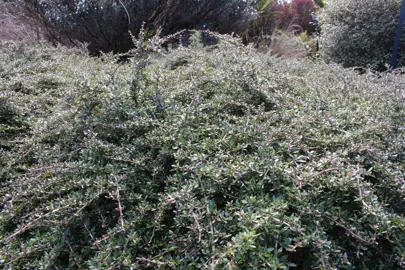
Coprosma 'Taiko' is a popular and hardy groundcover shrub that is native to New Zealand. Some of its key characteristics include:
Overall, Coprosma 'Taiko' is a versatile and easy-to-care-for groundcover shrub that offers several benefits, particularly coastal areas. Its beautiful foliage, attractive berries, and low-maintenance requirements make it a popular choice for landscapers and gardeners alike.

Coprosma tenuicaulis, commonly known as swamp coprosma, is a New Zealand native shrub that thrives in wet environments. It typically grows to 4 m tall and 1.5 m wide with the following characteristics:
Coprosma tenuicaulis is a valuable plant for wetland restoration and can be an interesting addition to a water feature such as a pond or stream.
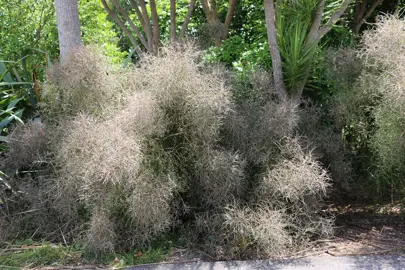
Coprosma virescens, also known as mingimingi, is a captivating shrub that is endemic to New Zealand. It is known for its unique appearance and adaptability:
Coprosma virescens is a versatile and interesting shrub that adds texture, colour, and ecological benefits to gardens. Its adaptability to various conditions and tolerance of dry areas makes it a valuable choice for low-maintenance landscaping.
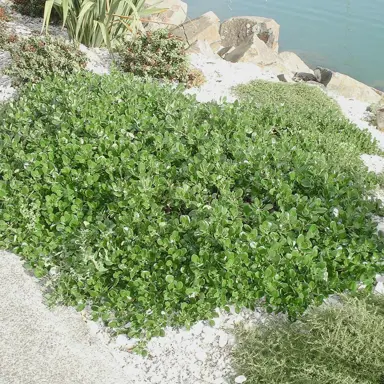
There are several great Coprosma ground cover plants. A few of the most popular and presented as follows:
Providing the best fertiliser for Coprosma is important to ensure the plants thrive. The correct fertiliser depends on whether the plant is grown in a pot or in soil, and getting this wrong can be disastrous for your plants. Our articles provide the best advice about Coprosma fertiliser so you can achieve the amazing results you are after.

Coprosmas are vigorous plants that require feeding to keep them growing optimally. The Plant Company’s native plant fertiliser has been blended to give plants an initial boost and then sustained nutrition for 12-months. We recommend the fertiliser is applied to the soil surface in spring just as the plants start to grow actively. More importantly, we advise that no fertiliser is placed in the hole at planting, but rather spread around the soil surface so it can wash through the roots as it releases. The Plant Company’s native fertiliser ensures that nutrients remain in the soil around the plant rather than being lost through the soil profile to where the plant cannot reach it. This also applies to plants grown on sandy soils. This fertiliser is therefore very environmentally friendly and longer lasting than most other products in the market.
Foliar feeding using a liquid fertiliser can be undertaken if you have time but this is not essential if native plant fertiliser has been applied. If you think the plants need an extra boost or have some yellowing, however, a liquid fertiliser application won’t hurt. A great benefit of foliar feeding is that it helps keep the leaves strong and lush.
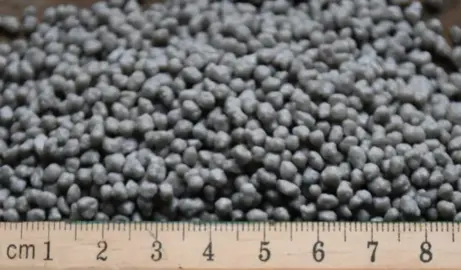
Coprosmas grown in containers require different fertiliser to those grown outdoors in soil. In this instance the correct fertilisers to use are either the container plant fertiliser or fertiliser tablets. Each of these will provide safe, sustained, and complete nutrition to the plant for the next 12-months. Using other types of fertiliser can be detrimental to the plant and may result in plant injury or death.
Foliar feeding using a liquid fertiliser can be undertaken if you have time but this is not essential if container plant fertiliser or fertiliser tablets have been used. If you think the plant needs an extra boost or has some yellowing, however, a liquid fertiliser application won’t hurt. A great benefit of foliar feeding is that it helps keep the leaves strong and lush as the nutrition is right where the plant needs it.
Planting a Coprosma and getting it to grow well is generally easy when you get a few of the basics right. This involves planting them in the right soil type, choosing the most ideal planting position, and ensuring the plants have the essentials to thrive. The Plant Company has the right advice to ensure success when you are growing a Coprosma.
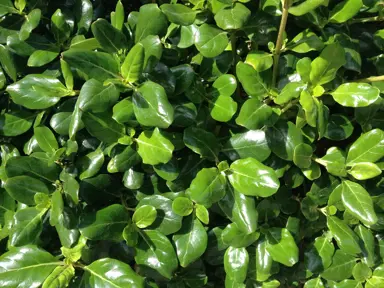
Coprosma repens can tolerate light shade and might survive under trees, but there are some factors to consider for its success:

Coprosmas are commonly trimmed into a variety of shapes, including hedges, screens, topiaries, and other decorative forms. The best time to prune Coprosmas is during late winter or early spring, before the plant starts to produce new growth. However, coprosma can be pruned at any time of year if needed.
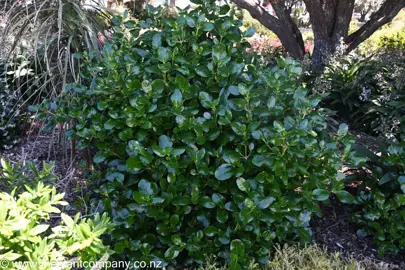
Coprosma repens, also known as Taupata or Mirror Bush, is an excellent choice for a coastal hedge. This shrub thrives in coastal conditions, tolerating wind, salt spray, and sandy soils. The leaves have a waxy surface which is designed to retain moisture. This same wax gives the plant its glossy appearance, hence the name Mirror Bush. Coprosma repens grows quickly and will reach 3 m tall and 2 m wide, with dense foliage. For hedging it responds well to pruning and can be trimmed to your desired shape and size. It is also drought-tolerant and largely disease resistant. A further feature are the orange berries which are great for attracting birds and add a further element of interest. Considering these points, Coprosma repens is perfect for a coastal hedge and is often recommended by The Plant Company.
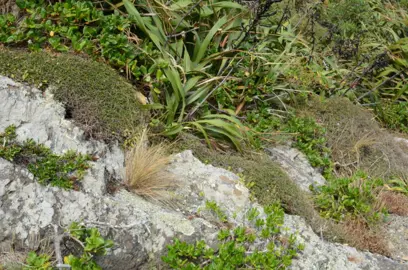
The planting distance for Coprosmas depends on the species and the desired effect. For example, if you are planting to create a hedge, you will need to plant them closer than if you are planting them as individual specimens.
Here are some general guidelines for planting Coprosma:
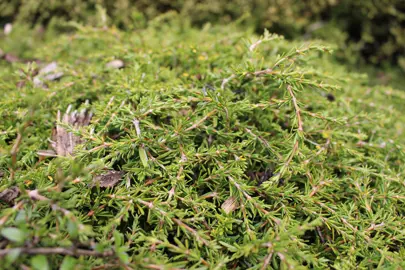
Coprosma acerosa 'Hawera' makes an effective and dense groundcover plant. It has dense foliage that is perfect for suppressing weeds and protecting delicate soils. Planting is best undertaken any time during autumn, winter, and spring. They are best planted in a full sun position on a well-drained site, but they can cope with heavier soils and some shade. The plants are best spaced about 1 m apart, but you can go to 1.5 m if needed. Be sure to water the plants in after planting and scatter native plant fertiliser on the soil. The Plant Company recommends applying a layer of bark or other mulch around the plants to help them establish more quickly.

Coprosma repens 'Poor Knights' makes a lush and beautiful ground cover. It has dense foliage that is perfect for suppressing weeds and protecting delicate soils. Planting is best undertaken any time during autumn, winter, and spring. They are best planted in a full sun position on a well-drained site, but they can cope with heavier soils and some shade. The plants are best spaced about 1 m apart, but you can go to 1.5 m if needed. Be sure to water the plants in after planting and scatter native plant fertiliser on the soil. The Plant Company recommends applying a layer of bark or other mulch around the plants to help them establish more quickly.

Choose a full sun position with good drainage for your Coprosma plant. The hole should be dug at least 50-75% deeper and wider than the container the plant is currently growing in. A planting spade makes the hole digging a lot easier. The Plant Company recommends incorporating compost or sheep pellets into the soil to provide additional organic material, but this is not essential. Do not put fertiliser in the bottom of the hole, rather spread that on the soil surface after planting, and preferably do this when the plant is actively growing in spring.
Remove the plant from the container it is growing in by either pulling it free or by cutting the bag. We recommend cutting the bag or container, especially for larger grade plants, to minimise any chance of damaging the roots. If the roots have been growing in a circle or are all bound up you can tease them apart if you want but this is not essential. Similarly, you don’t need to remove any of the growing media. The Plant Company does not recommend cutting the roots, even if the plant is root-bound as this offers no benefit. This is explained in our article, Managing Rootbound Plants.
Now place the plant in the hole and make sure it is level with the soil surface before filling in around it. If it is above the soil surface, dig more out. If it is below, put in more soil and retest the level. Once the plant is set level with the soil surface, add more soil gradually and firm it around the plant using gentle pressure as you go. Scatter native plant fertiliser across the soil surface after planting and the give the plant a good watering.

Only potting mix should be used when plants are grown in a container. Often people will try and cut corners and use soil or mixes that contain both soil and potting mix with poor results. The same applies to when plants are potted up with compost as it holds too much moisture. Soil also contains weeds and tends to become compacted in a container, hence why it is not used in this manner. The Plant Company has nursery grade potting media which is pre-loaded with the correct amounts of fertiliser and micro-nutrients to keep the plant sustained with nutrition and actively growing for the next 12-months. After 12-months, simply add a couple fertiliser tablets to keep the plant fed for the next 12-months.
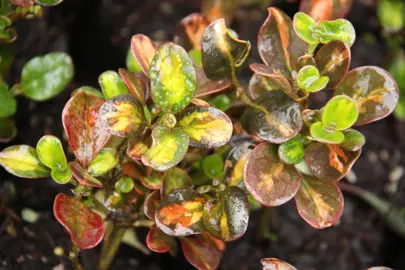
A full sun or partial shade position with good drainage is essential for getting the best results with Coprosma. On poorly drained sites or with over-watering they tend to become stunted and sickly looking with leaves dropping. This can also cause and result in root rot issues that may eventually kill the plant if drainage is very poor.
As shade levels increase, Karamu tend to become “leggy” and more open in their growth habit. In full sun they tend to be more compact and denser which is particularly important if you are considering a hedge. The shaded option is more for standalone plants where density is less important. The position should also be moderately sheltered so fresh growth is not damaged by wind and this will help produce a better shaped plant overall. This is not essential as they can cope with wind. Where ever they are grown, make sure they have plenty of room to expand!
Enjoy free shipping on orders over $150 along with fast delivery of high quality plants.
Whether you need assistance finding the plant you’re looking for or you simply want to know more about who we are and what we do, we invite you to get in touch with us today. A member of The Plant Company team will get back in touch as soon as possible.


